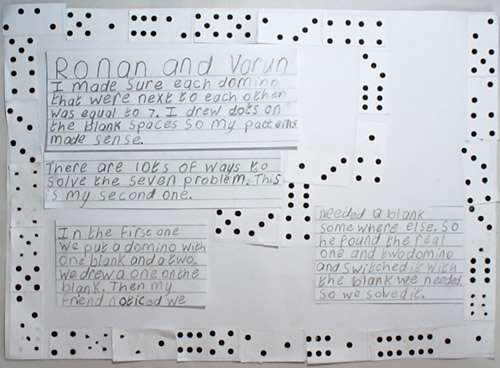Skip over navigation
Alistair and Jessica at Randlay School in England said:

Or search by topic
Number and algebra
Geometry and measure
Probability and statistics
Working mathematically
Advanced mathematics
For younger learners
Domino Patterns
Age 5 to 7
Challenge Level 





- Problem
- Getting Started
- Student Solutions
- Teachers' Resources
Alistair and Jessica at Randlay School in England said:
We did this by finding the largest number 6/6 and then finding another domino with six and any other number on it. Over to Jess.
We found interesting patterns and also played a game of dominoes. Alistair wasn't sure at first but I soon taught him!
Ronan and Varun from the International School in the Seychelles sent us a picture:

They have made touching dominoes add to seven, although, as they explain, they have added dots rather than using the 'standard' domino set. Thank you for telling us about your work.
We found interesting patterns and also played a game of dominoes. Alistair wasn't sure at first but I soon taught him!
Ronan and Varun from the International School in the Seychelles sent us a picture:

They have made touching dominoes add to seven, although, as they explain, they have added dots rather than using the 'standard' domino set. Thank you for telling us about your work.
You may also like
Let's Investigate Triangles
Vincent and Tara are making triangles with the class construction set. They have a pile of strips of different lengths. How many different triangles can they make?

